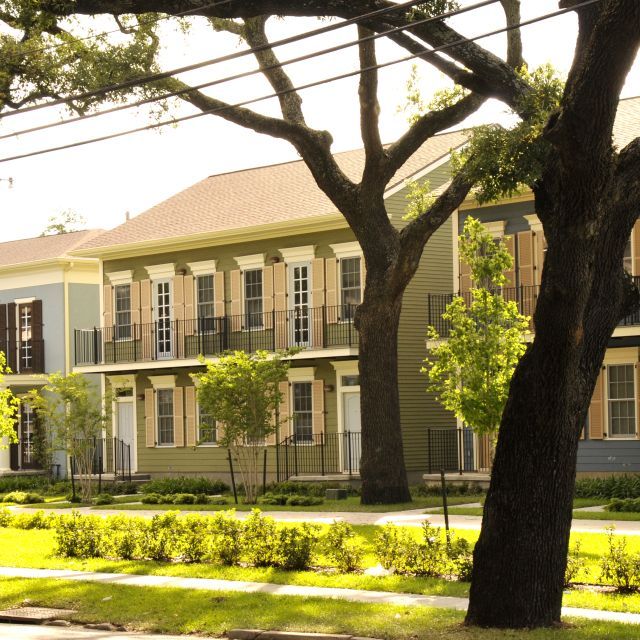Can empty office buildings help provide a solution to the nation's affordable housing crisis? Policy and real estate leaders across the country – from California to New York City – are looking with interest at ways to encourage the conversion of offices to homes just as downtown districts are struggling to recover from the Covid-19 pandemic.
Despite the flurry of interest and policy proposals, which also include efforts in Portland, Oregon, Washington, D.C., and Chicago, transforming empty office space into affordable homes on a large scale won’t be easy. A host of challenges – from financial roadblocks to lack of structural suitability and regulatory complexity – means that office-into-housing conversions aren’t likely to provide a broad solution. Jurisdictions and housing stakeholders interested in supporting the conversions will need to focus on targeted efforts in locations where they are physically and financially viable as part of broader efforts to boost housing production and affordability.
These policy discussions come amid the convergence of rising office vacancy rates and housing shortages in cities across the country. The Covid-19 pandemic upended how businesses work, pushing more companies to adopt work-from-home and hybrid policies, reducing demand for office space, and increasing the overall U.S. office vacancy rate. Meanwhile, housing supply and affordability challenges persist nationwide. The U.S. has a shortage of approximately 3.8 million homes, a figure that goes up to 7.3 million rental homes when examining the supply of homes affordable and available to renters with extremely low incomes (those earning up to 30% of their area median income).
Physical and Structural Suitability
Converting a mid-to-high rise office building into multifamily housing is not always an easy or a straightforward process from a structural perspective. Here’s why:
- Twenty first-century contemporary office buildings often have large, wide floorplates. The amount of square footage that can be leased on each floor of a building is larger for office properties compared to other uses like residential properties, and the horizontal distance between the external wall and the center of the building is much greater than the floor-to-floor height.
- These wide and large floor plates are designed to create expansive open spaces that tenants of office buildings can customize to cubicles or enclosed offices; conference rooms; and service spaces, such as storage rooms, reception areas and kitchens, with their only limitations being structural columns, elevators, and stairwells. The large, unobstructed floor plates that make these spaces appealing as leased office spaces are also the primary challenge in retrofitting them into residential units.
- The floorplate of these office buildings is often too deep for natural light to filter into these spaces, making them cavernous and unsuited for residential use. A creative architecture firm and developer could offset this challenge by cutting out an atrium in the center of the building, but this kind of intervention is often cost prohibitive, as it is a technically challenging and time-consuming undertaking.
- Other challenges include inoperable windows; more elevators than needed for a multifamily housing development; the location of structural columns and limitations on where residential units can be placed on the floor plan; and any mechanical or plumbing challenges.
An assessment of office conversions conducted by the District of Columbia’s Office of Planning in 2020 highlighted how the economics of these physical conditions rendered some office-to-residential conversions financially infeasible. An office-into-residential proposal was deemed financially infeasible when the deep floor plate results in deep residential units with spaces that do not have access to daylight (the bedrooms would not have external windows due to the long distance between these rooms and exterior windows). The proximity of the office building to other tall buildings, which would have further restricted the flow of natural light into the newly created residential units, exacerbated this issue, making the conversion financially unable to command rents that would allow it to pencil out.
Recent studies show that older office buildings with narrower floorplates have proven to be better fit for office-to-residential conversion. A January 2023 study by New York City’s Office Adaptive Reuse Task Force explains that “early twentieth-century office buildings with shallow floor plates and individual operable windows are generally the easiest and most attractive to convert because they require less intense physical alteration and allow for relatively efficient apartment layouts.”
Financial Feasibility
To secure equity and debt needed to finance the conversion of an office building into multifamily housing, a developer must demonstrate that the proposal is financially feasible. That means that the estimated costs of an office-into-residential conversion, as well as the projected property management expenses, must not exceed the estimated financial return on renting the proposed multifamily housing in the future. Several factors that can impact the financial feasibility of a proposed office-into-housing conversion include:
- The quality of the construction. A high-quality office building that was recently built will be more expensive to acquire than older office buildings with lower quality, regardless of any other factors.
- Existing or asking rents. Generally, in a real estate market where median asking rents per square footage are higher for office properties than multifamily housing, it would be difficult to economically justify office-into-residential conversions, unless the target office buildings are lower-quality, older office properties that have high vacancy rates and/or lower asking rents than market-rate multifamily properties.
- The vacancy rate of the office building largely shapes the acquisition costs in an office-into-residential conversion. Additionally, if the acquired office building is not completely vacant, the developer will incur additional acquisition expenses related to terminating existing office leases, such as covering the cost of relocating existing businesses or any buyouts.
In addition, physical and structural complexities can significantly hurt the financial feasibility of office-into-housing conversions. For example, most office buildings include up to two bathrooms on each floor, which means that converting an office building into multifamily housing would require significantly modifying the existing plumbing and sewage systems to allow for adding at least one bathroom per residential unit. The developer may also be required to re-work the existing lighting and mechanical systems to make them more appropriate for individual residential homes.
To help boost the financial feasibility of office-into-residential conversions, some state and local jurisdictions have been exploring the use of public financial tools, including access to low-cost loans with favorable terms and targeted affordable housing funds that can be used to acquire and convert office properties into affordable rental housing.
Allocating state or local housing subsidies to support conversions is especially needed to develop rental homes affordable to lower-income households, or even for moderate-income households in high-cost markets. It would be most cost effective to prioritize using public subsidies for more financially feasible office-into-residential conversions, where these subsidies would be used to close the gap between rents that are affordable for targeted households (earning up to 30%, 50% or 80% of their area median income) and market-rate rents.
Some jurisdictions – including Washington, D.C., and Portland, Oregon – have been exploring using tax abatements to incentivize such conversions. Under Washington, D.C.’s tax abatement program, eligible downtown properties receive a tax abatement for 20 years in exchange for setting aside a certain share of the developed homes as affordable rentals. The City of Portland adopted incentives to support office-into-residential conversions, including waving fees collected from developers to cover any needed changes to public infrastructure that may result from a building redesign. Additionally, some developers have been able to use the federal Historic Tax to rehabilitate eligible older office buildings into multifamily housing.
Learn more about regulatory hurdles and market conditions affecting office-to-housing conversions in Part 2 of our series.



